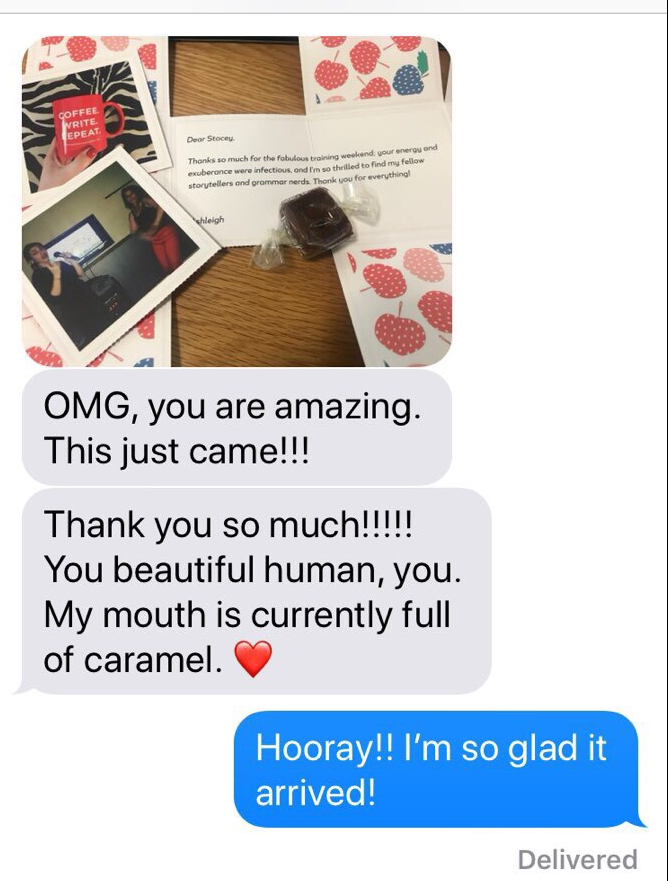Can you picture her? The girl in your same grade who constantly asked, "Do you think I look fat?" Maybe she was your best friend or the bane of your existence. Maybe she had the strong core of a ballerina or the strong calves of a star soccer player. Maybe she was rail thin or gorgeously curvy. The facts of her figure didn't matter. The resounding chorus of her being was the same, like a broken record, replaying the same few notes over and over.
Am I fat
Am I fat
Does this make me look fat
Do you think I look fat...
The chorus began to lose meaning, so diluted by its frequent play. The question became a rhetorical one that begged no answer. It was symptomatic of issues much deeper, but how to broach those?
***
I received an advance release copy of Rachel Simmons' Enough As She Is: How to Help Girls Move Beyond Impossible Standards of Success to Live Healthy, Happy, and Fulfilling Lives which just released in the last week. I've already delved into it and even though this book primarily offers guidance for parents of daughters, there is one chapter that has universal appeal for women.
which just released in the last week. I've already delved into it and even though this book primarily offers guidance for parents of daughters, there is one chapter that has universal appeal for women.
The "Can We Fat Talk?" chapter is grounded in current research and offers a very sobering portrait of what a social media-saturated girlhood is like. I found myself highlighting and dog-earing just about every page. Simmons knows her stuff. But rather than simply painting a fearful portrait, the book also offers many helpful, actionable solutions for steering girls away from body shaming and toward a positive, holistic view of themselves at this moment in time.
 In many ways, though, this chapter seems as though its audience could be any female readership. Fat Talk is a problem that begins in girlhood that we cannot seem to outgrow as women. Simmons writes that Fat Talk may feel like Friend Talk but it builds a bridge at the expense of putting down an individual. As women, too often we bond over one-upping (or one-downing?) each other on our body shaming. How many times have you been privy to two women gushing about how much they ate over the holidays or how lazy they were on a vacation? Maybe you were even participating in the conversation. It may have seemed innocuous, but is this the message we want to send girls? That the currency of true friendship is exchanged by putting one's physical self down?
In many ways, though, this chapter seems as though its audience could be any female readership. Fat Talk is a problem that begins in girlhood that we cannot seem to outgrow as women. Simmons writes that Fat Talk may feel like Friend Talk but it builds a bridge at the expense of putting down an individual. As women, too often we bond over one-upping (or one-downing?) each other on our body shaming. How many times have you been privy to two women gushing about how much they ate over the holidays or how lazy they were on a vacation? Maybe you were even participating in the conversation. It may have seemed innocuous, but is this the message we want to send girls? That the currency of true friendship is exchanged by putting one's physical self down?
***
Simmons visited my children's public school system earlier this year and her talk was very resonant, covering the same topics addressed in her book (bullying, social media, the pressure to be perfect). She invited girls grades 2 and above to attend the talk. She was able to address the girls as well as their parents, speaking to both audiences in a way that was relevant but not preachy, funny but still heavy with the gravity of an important message. Many of the topics in Enough As She Is are geared toward parents guiding girls through the latter years of high school, but there is plenty relevant to parents of younger daughters. Moreover, so much of the message of modeling positivity and listening to our bodies and their unique needs is ageless, timeless.
are geared toward parents guiding girls through the latter years of high school, but there is plenty relevant to parents of younger daughters. Moreover, so much of the message of modeling positivity and listening to our bodies and their unique needs is ageless, timeless.
Simmons' book is certainly a drink from the fire hydrant and I'm finding it may be a perennial go-to resource than a quickfire read. The complexity of issues and the depth of the research and guidance speak well to the complexity and depth of being female, though, and I would recommend it to anyone who is one or who cares about one.
 Because I'm passionate about gifting and not committing an assault in Target in the act of gifting, and also about my friends being called beautiful humans for filling their bossladies' maws' with caramels, I think we should all send more Greetabls and here's 15% off to sweeten the deal!
Because I'm passionate about gifting and not committing an assault in Target in the act of gifting, and also about my friends being called beautiful humans for filling their bossladies' maws' with caramels, I think we should all send more Greetabls and here's 15% off to sweeten the deal!
 which just released in the last week. I've already delved into it and even though this book primarily offers guidance for parents of daughters, there is one chapter that has universal appeal for women.
which just released in the last week. I've already delved into it and even though this book primarily offers guidance for parents of daughters, there is one chapter that has universal appeal for women.